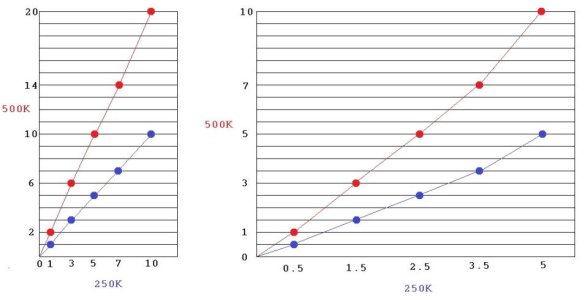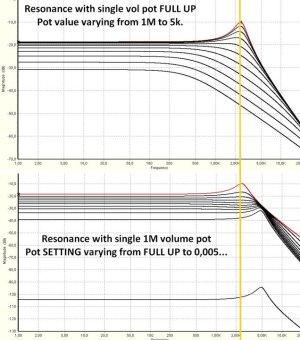In answer to beaubrummels, let's try again to be clear. If it's not the case, attribute that to my health issues.
A tone pot is grounded through the tone capacitor, which is schematically a frequency-dependent resistor.
Typically (with conventional 100nF/47nF/33nF/22nF values) this tone cap / frequency-dependent resistor avoids to the signal to go to ground until a few hundreds of Hz but it doesn't block at all what is beyond the cutoff/corner/knee frequency : high mids and high frequencies go to ground as the resistance of the tone pot decreases and that's precisely why it behaves like a tone pot...
Obviously, the resonant peak of a passive pickup is typically located in the high mids or high range, somewhere between 1500hz and a few thousands of Hz.
So, it's directly sensitive to the resistance between pickup and ground, this resistance being due... to the pots.
A second resonant peak, much lower and due to the tone capacitor, appears only when the resistance of the tone pot is reduced to nothing (or almost), connecting directly (or almost) the pickup to ground through the cap and changing its properties of resonant filter...
I like the following pic when it comes to illustrate what I mean:
https://nextgenguitars.ca/product_images/uploaded_images/tonepotfreq.png
Let's also share below a pic showing the electrically induced resonant peak of a real pickup with vs without tone pot. It's an old test (from 20 years ago) but that's what I had at disposal immediately and it clearly shows what is going on with a Strat bridge pickup VS a neck or mid one, for instance...
And thx to Christopher for his contributions below or before.






